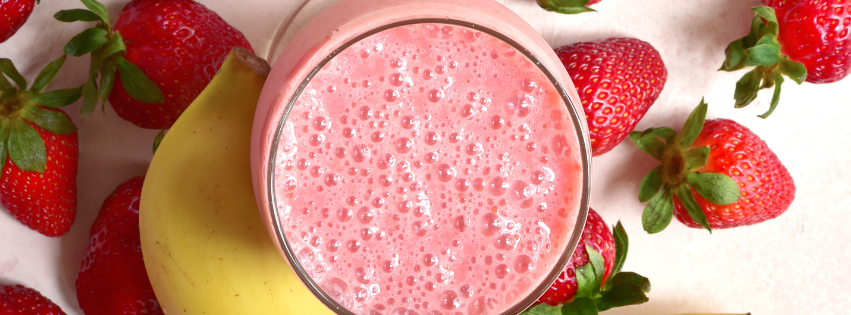
Why Bananas Might Be Blocking The Benefits Of Your Smoothie
BALA BITES: A BANANA IN YOUR SMOOTHIE IS THE PLOT TWIST YOU DIDN'T EXPECT
Banana and berries are a classic smoothie combo.
But new research suggests they may not play as nicely together as we thought—at least when it comes to maximizing health benefits.
In the study, participants consumed smoothies designed to test how well the body absorbs flavonols—a powerful group of polyphenols found in foods like berries and tea.
Some participants drank smoothies made with berries alone. Others had smoothies that included bananas (a fruit high in polyphenol oxidase, or PPO). Some were just given a capsule containing flavonol, a natural antioxidant.
Each participant then gave blood and urine samples to measure how much flavonol actually made it through their system.
The results?
When bananas were included in the smoothie, participants absorbed 84% less flavonol than those who took the capsule.

That’s a concerning drop because flavonols are health heroes. They support heart function, blood sugar regulation, brain sharpness, and gut resilience.
So if you’re drinking berry banana smoothies purely for their health benefits, bananas might be blocking some of the magic.
This isn’t a panic moment. It’s a perspective moment.
If banana-berry is your thing and brings you joy, keep sipping.
But if you’re aiming to optimize, it helps to know which ingredients act as blockers and which are boosters when it comes to polyphenol absorption.
FLAVONOL BLOCKERS & BOOSTERS
If you are looking to maximize the flavonols in your smoothie, here's what can block or boost your absorption so you can maximize how much goodness your body absorbs.
Blockers include bananas, apples and pears. They are high in polyphenol oxidase (PPO), which breaks down flavonols. Also, be careful of overheating or overblending your smoothie. It can impact sensitive polyphenols through degradation.
Boosters like avocado, nut butter and olive oil help your body soak in more benefits since they can offer healthy fats that enhance absorption. Vitamin C-rich fruits are great boosters since they help stabilize polyphenols.
The health of your gut microbiome will also determine your ability to absorb these beneficial compounds.
If you want to keep berries front and center of your smoothie and keep your flavonols available, then consider pairing them with fruits that have low polyphenol oxidase like citrus fruits (like orange or lemon), mango and pineapple.

BUT WHAT ABOUT BANANAS
They’re not the villain at all. They are just not the best match for berries if you're after maximum health bang.
Bananas can shine in other blends. Here are three favorites that don't run into the aforementioned flavonol issue:
-
Banana + Greens: Great for fiber, hydration and plant diversity. Try: banana, spinach, avocado, chia seeds and coconut water.
- Banana + Protein: Perfect for recovery and lasting energy. Try: banana, Greek yogurt or protein powder, oats, flaxseed and either A2 or coconut milk.
- Banana + Cacao: Mood-boosting and indulgent (without being over the top). Try: banana, raw cacao powder, nut butter and A2 milk.
So yes—banana smoothies are still 100% "health-worthy." Just pair them with purpose when you make your next smoothie.
Let berries do their flavonol thing solo. Let bananas energize and satisfy elsewhere.
Just want you to stay smoothie smart, not smoothie stressed.
KEY TAKEAWAYS
- If you’re making a banana smoothie for health reasons, understanding how polyphenol oxidase (PPO) impacts flavonol absorption is essential
- Berries are packed with antioxidants, but when blended with high-PPO fruits like bananas, your smoothie may lose much of its health potential
- To optimize your antioxidant smoothie, choose ingredients like Greek yogurt, citrus fruits or mango instead of bananas
- Smoothie recipes can help you make the most of every sip, especially if you’re relying on berries for flavonol-rich benefits
FURTHER READING
Protein powder buyers' guide. How to buy the best protein powder for your needs.
Learn from Novak Djokovic's gut health journey. This is the gut health story you can't miss.
Learn how to identify and manage trigger foods. They could be contributing to your unwanted symptoms that you can't get rid of.